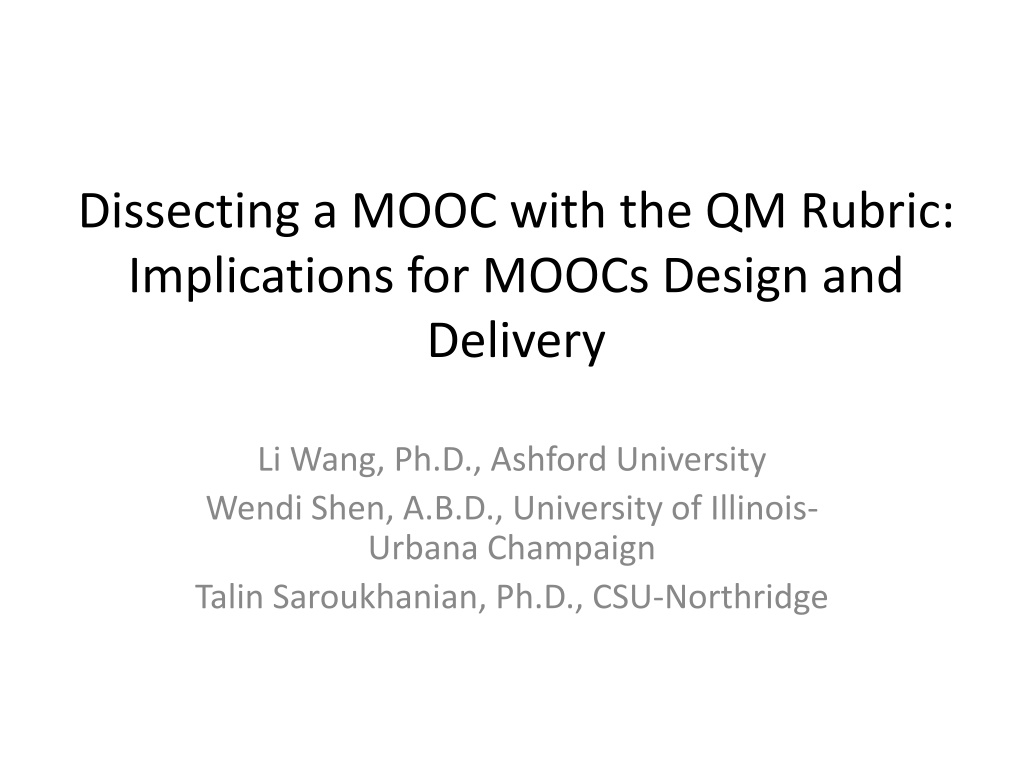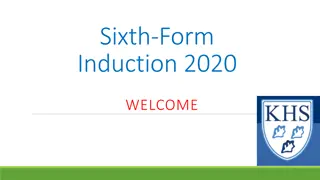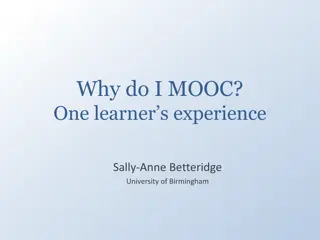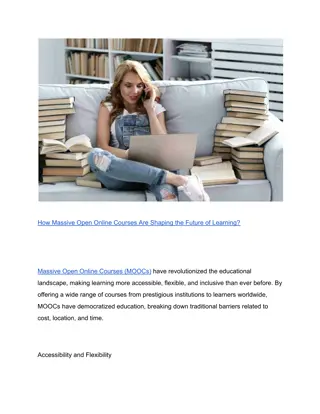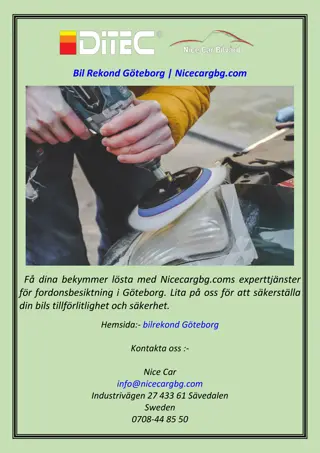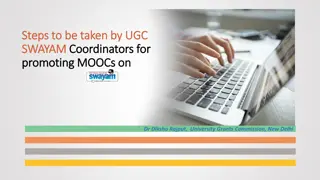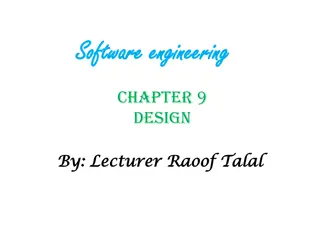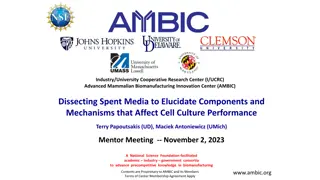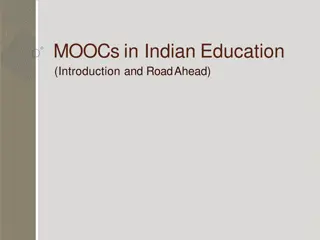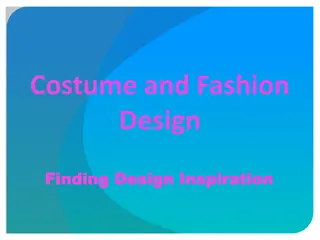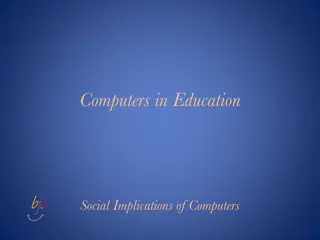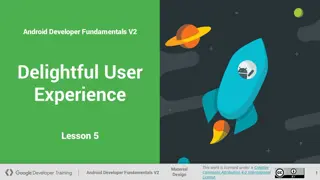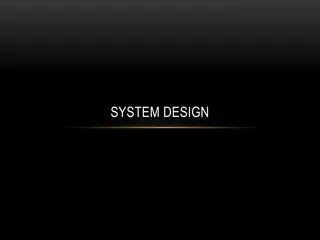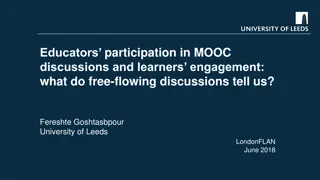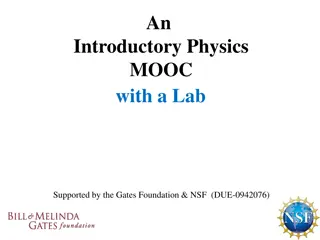Dissecting MOOCs: Implications for Design
This study examines a MOOC using the QM Rubric, highlighting areas for improvement in course design and delivery. Topics covered include course overview, assessment, materials, community building, teaching methods, technology use, learner support, and accessibility considerations.
Download Presentation

Please find below an Image/Link to download the presentation.
The content on the website is provided AS IS for your information and personal use only. It may not be sold, licensed, or shared on other websites without obtaining consent from the author.If you encounter any issues during the download, it is possible that the publisher has removed the file from their server.
You are allowed to download the files provided on this website for personal or commercial use, subject to the condition that they are used lawfully. All files are the property of their respective owners.
The content on the website is provided AS IS for your information and personal use only. It may not be sold, licensed, or shared on other websites without obtaining consent from the author.
E N D
Presentation Transcript
Dissecting a MOOC with the QM Rubric: Implications for MOOCs Design and Delivery Li Wang, Ph.D., Ashford University Wendi Shen, A.B.D., University of Illinois- Urbana Champaign Talin Saroukhanian, Ph.D., CSU-Northridge
Whats your vote? Yes No Image source: http://campustechnology.com/articles/2013/08/07/moocs- eat-stanford-harvard-closes.aspx
Agenda 1. Course Overview & Summary 2. Assessment 3. Materials 4. Community Building 5. Teaching & Facilitation 6. Course Technology 7. Learner Support & Resources 8. Accessibility
Course Overview & Summary Clear message Nice and short video(59 sec) to spark and sustain interest Syllabus not quite clear Jargon used Instructor role unclear
Assessment SLOs Measurable PLOS and CLOs listed Peer Coaching Multiple Choice Proctored exams Too many objectives tangled into one Too long , wordy and jargon Assessment-CLOs-PLOs alignment not clear Lack of other assessment types Open ended question A B
Assessment Cont. One Objective Example: Identify and analyze the social dimension of society as a context for human life, the processes of social change and social continuity, the role of human agency in those processes, and the forces that engender social cohesion and fragmentation. Revised Objective Example: Identify and analyze the social dimension of society as a context for human life processes of social change and social continuity role of human agency in those processes forces that engender social cohesion and fragmentation Example Why do we form friendship? What effects did Hurricane Katrina have on the residents of New Orleans? Why would a change in management lead to employees quitting their jobs? How does Facebook create community?
Materials Use of videos Some videos might be too long (18 minutes average in one course, 9-38 range) Cognitive overload A Duration Recommendation: <=2 minutes Over 2-minute treatment: 1) chunk 2) emphasize the beginning
Community Building Highly motivated individuals respond and connect with others Lack of community building after the course is inactive
Teaching & Facilitation Frequent communications (47 messages sent by the instructor Instructor fails to keep promise
Course Technology Quiz question embedded in video Google hangout and alternative meeting space Lack of Technology support Video not loading in Firefox. Not expected
Learner Support & Resources FAQs Video on taking class in a particular environment APA mentioned but no reference provided or resource suggested Help resources need updating based on these discussions
Accessibility Video captioned Multiple ways of access (download) Alternative virtual meeting space for google hangout Problem Set after the video prevents key tapping through
Course Summary & Wrap-up Instructor s extra resources to keep students motivated Seeking feedback for improvement Lack of summary/wrap-up and connecting the dots, typical house cleaning
Possible Solutions Designer Facilitator Students Use standard font Provide study guide Have a plan Ensure clarity of content Teach Metacognition Connect with others Be clear and comprehensive. Include technology readiness checklist Explore inside and outside (Wikipedia) Help connect the dots throughout and at the end (concept mapping) Ask questions. Be critical. Make use of instructor notes area Summarize messages /discussions into Q&A or FAQ
MOOCs Future? Student teaching/facilitating MOOCs Not replacing faculty Not replacing traditional education Going blended/flipped classroom xMooc in session with cMooc post session(MapQuest, Activity Guide) Active Model Post Class 1. Instructor led 2. Multiple assessments 3. Weekly Summary 1. Discussion summary 2. FAQs: content Prior to start Technology checklist Grouping students Readiness questions Self Study Mode Summary 1. Webquest/Team Teaching 2. Study guide 1. Weekly summary 2. Rubric 3. Work samples
Disclaimer All screenshots unless specified are all taken from the two courses from Udacity and Coursera. Please do not distribute.
Contact Contact Author: Li Wang, Ph.D. Li.Wang@faculty.ashford.edu
